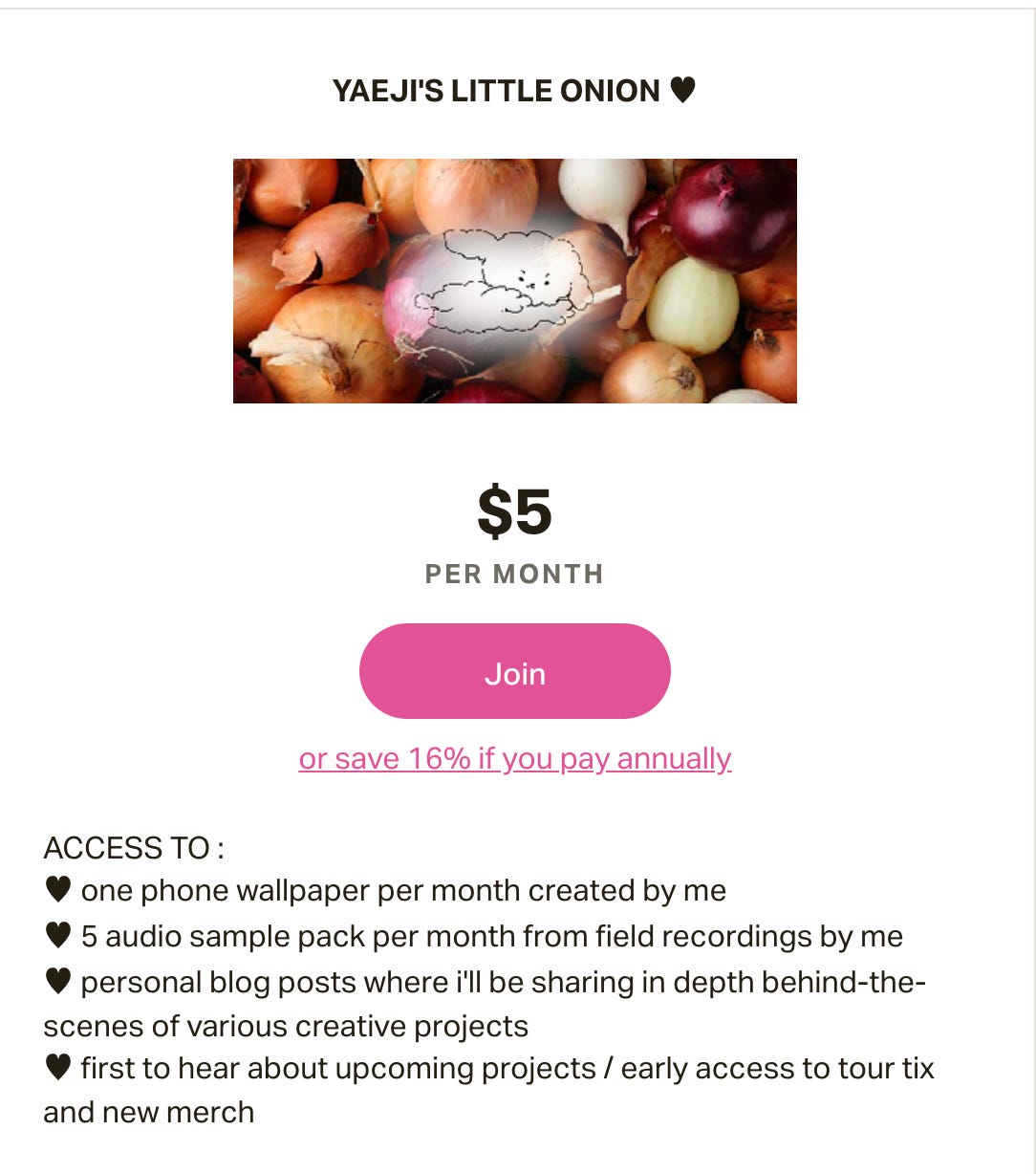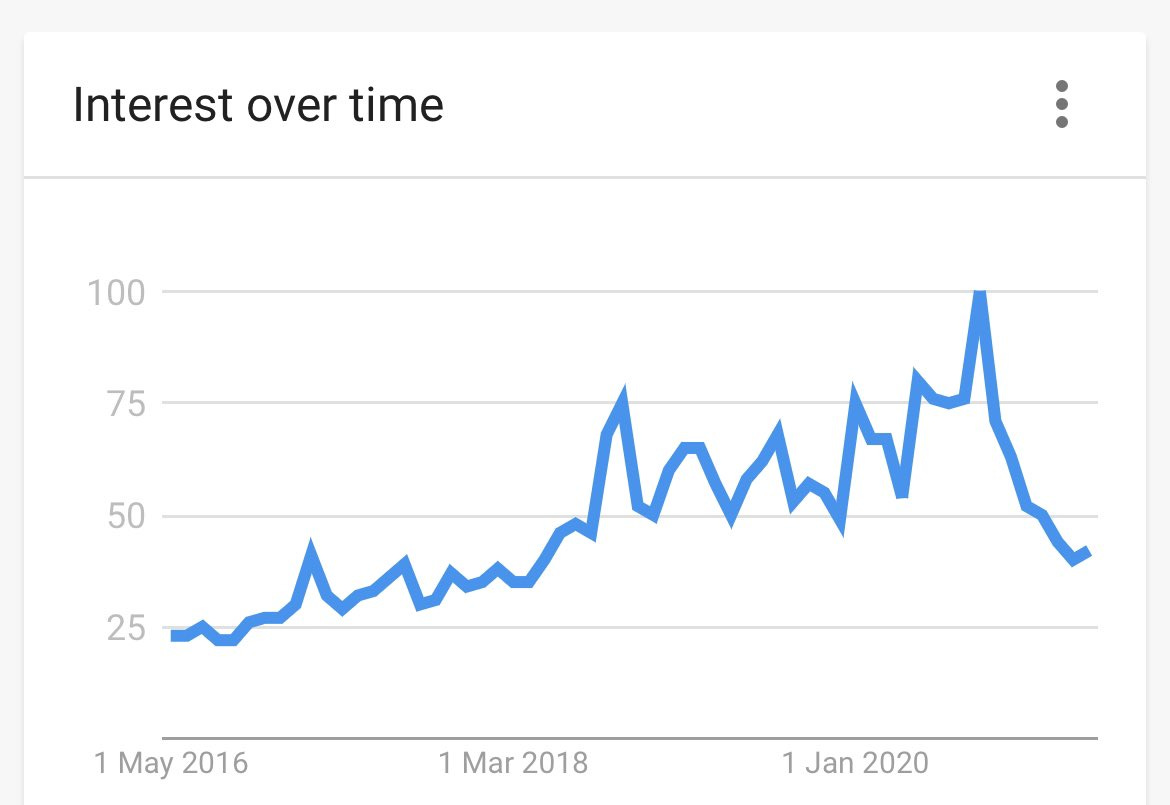A couple of months ago, I wrote an article about non-fungible tokens, or NFTs for short. It got a lot of traction right off the bat. It’s one of the most-viewed articles in the history of this newsletter.
Since then, NFTs have really moved into the mainstream, especially after the artist Beeple sold one of his artworks as an NFT for $69 million. Still, outside of the crypto community, most people seem to really hate the concept of NFTs. Here’s a Tweet that I saw the other day.
It’s not just Twitter. I’ve had friends and family reach out to me and tell me that they don’t really understand the point of NFTs either. They also don’t really understand why I’m so excited about them.
So today, I’m going to do my best to explain why NFTs are revolutionary and why my friends and family should stop being concerned about me.
A super-simplified explanation of NFTs
Most NFTs are blockchain versions of art you can easily find online (that’s the joke in the Tweet above). They might be jpegs, mp3s, or gifs.
The blockchain does provide one benefit that normal jpegs, mp3s, or gifs don’t have: It shows proof of scarcity and authenticity. Blockchain can show the full transaction history of where the NFT came from and provides evidence that the owner of an NFT holds one of the few “verified” copies of the piece of art.
NFTs are often compared to physical collectibles like trading cards, and they do share some similar characteristics. Recently, a holographic Charizard card from 1999 sold for more than $300,000. While anyone can get on their computer and print out a picture of a Charizard, it’s been estimated that there are only 122 authentic copies of that specific card in the world. Personally, I’d never drop that much money on a Pokemon card, but scarcity and authenticity mean that there’s some fanboy out there who would.
What’s interesting about NFTs is 95% of them are minted on the Ethereum blockchain. Ethereum is a completely decentralized crypto network, which means that there’s no one person or one organization that’s in charge of it. It’s open-source and “owned” by the Ethereum community as a whole.
That’s a big deal: getting rid of the middleman can be a game-changer for creators.
Why NFTs are great for creators
During the weekdays, I work full-time as a marketer for a tech company. I can tell you that the biggest struggle for any marketing department in the world is figuring out how to build a direct relationship with your audience without having a platform like Google or Facebook in the middle. Relying on the kindness and compassion of the tech giants is dangerous — one small algorithm change might mean that nobody in your audience sees your content anymore and your entire business is destroyed.
For years, creators have gone through a similar struggle. Artists, comedians, and actors needed to go to record labels, television networks, and movie studios just to make a living. Then, they’d be at the mercy of a few people who held absolute power over their hopes and dreams. Most of the time, these gatekeepers would end up taking most of the profits of the artists’ labor.
Nowadays, it’s easier than ever for creators to get their work directly to fans. But they still aren’t seeing the rewards for their art — middlemen and gatekeepers are. After Spotify and record labels take their cut, it’s estimated that musicians typically get to keep just 10% of the revenue from the art they create.
What about Patreon?
Right now, the best way for creators to get around Facebook, Google, and the other middlemen of the world and directly monetize their fanbase is through platforms like Patreon. The platform offers low fees in exchange for allowing creators to deliver exclusive content to their subscribers. It sounds like a great deal, but there are a few problems.
Problem #1: No direct relationship
Because Patreon is a centralized platform and a for-profit company, the same “middleman” problem that we discussed earlier still exists. At the end of the day, Patreon’s biggest goal isn’t to serve artists, it’s to deliver returns for its investors. As a creator, you never know if Patreon will make a small change to Terms & Conditions that will increase its profitability but end up hurting your business.
Problem #2: Pumping out content doesn’t work for everyone
Some artists do really well on Patreon. For example, the comedy podcast Cum Town, which features stand-up comedians Nick Mullen, Adam Friedland, and Stavros Halkias makes $81,610 a month. Every week, they release an exclusive podcast just for their subscribers.
Obviously, what these guys do is incredibly hard — very few people are able to have hour-long conversations and make it hilarious on a consistent basis. Still, if you have the kind of talent that those guys have, releasing comedy podcasts doesn’t take a ton of time. You sit down, you have a conversation, and you say funny stuff.
Not every artistic medium works the same way. For example, musicians often spend months just working on a single song. That doesn’t translate well to a platform like Patreon, where creators are expected to put out content regularly to their subscribers.
One of my favorite musicians, Frank Ocean, took a 4-year gap between his debut album Channel Orange and his sophomore album Blonde. As a fan, I’m happy he took his time to deliver a great product. But if I was a subscriber to his Patreon, I’d be disappointed that I paid 4 years worth of fees for nothing.
It’s kind of hard to find musicians who are doing as well as Cum Town on Patreon. Let’s look at the house musician Yaeji, who currently has more than 1 million monthly listeners on Spotify.
I do like Yaeji’s music, but honestly I probably wouldn’t pay for this. It’s not that I wouldn’t want to support her — I’m just not really interested in getting a new phone wallpaper or getting audio sample packs. Unfortunately, these are really the only benefits she can offer, because releasing exclusive songs for fans on a monthly basis just isn’t viable. That means that her Patreon isn’t getting the kind of traction that it should have given her fanbase — right now, it only has 53 subscribers.
Problem #3: Gated content means less reach
If you’re an artist who decides to get started with a subscription model, you are making a trade-off. When you release exclusive content only for your subscribers, you might end up making more money. However, your work will end up reaching fewer people, which may limit the growth of your audience.
For an example, let’s take a look at one of the biggest podcasters in the world: Joe Rogan. Before September of last year, his podcast was available on most podcast players and YouTube. Then, he signed an exclusive deal with Spotify, and his interviews were taken off every other platform. Google Trends data shows that searches for Joe Rogan declined sharply after this happened.
Look, I doubt Joe Rogan is too concerned about this since he got a check for $100 million — but it’s undeniable that gating his content has reduced the size of his audience and given him less cultural influence. If you’re a creator who doesn’t have his fanbase, this can be a big problem.
How NFTs can solve these problems
What makes NFTs so exciting is that they can solve all three of these problems.
Solution #1: No middleman
Again, Ethereum is fully decentralized. There’s no middleman in the Ethereum network who can snap their fingers and decide to kick you off the platform or change the algorithm to hurt you. If you’re an artist, you have a connection with your fanbase that you can actually rely on.
Solution #2: Artists don’t need to pump out content
If an artist is selling NFTs, there’s no expectation for them to release content on a monthly or even yearly basis. Artists like Frank Ocean can take their time to release their work. They’ll be able to monetize their biggest fans without having to worry about their subscribers begging them for more.
Solution #3: NFTs can give artists reach & money
Right now, artists have to ask themselves this question: Should I gate my content and limit my audience, or should I put it all out there and lose out on revenue? NFTs can eliminate the need for artists to make this choice. Let’s think about this in the context of music: while Spotify exposes musicians to wider audiences, they get less than a penny every time one of their songs is played. Blockchain offers an opportunity: Artists can continue to keep their music on streaming platforms, but also sell their most popular songs as NFTs. This gives them the opportunity to monetize their biggest fans without compromising the size of their audience.
The biggest benefit of NFTs: An ownership stake in your favorite artists
We haven’t even gotten to the biggest benefit NFTs have over Patreon: the ability for creators to give dedicated fans a financial stake in their success.
Maybe in the future, musicians who need to get more money to buy more equipment and studio time don’t need to only rely on working a day job. Instead, they can sell their works as NFTs to their early supporters.
There’s a reason why fans would want to get in on this action as well. If you buy an NFT from a musician you find on SoundCloud who later blows up, you’ll be able to sell that NFT for a significant gain. You get rewarded for supporting the creator from the very beginning.
There’s also a huge marketing benefit for creators. Fans who own NFTs have a financial motivation to tell friends and family members about that artist. That can be a big deal for an artist struggling to get recognition.
For an example of how this could work, let’s look at Bitcoin. Bitcoin’s total value is now worth more than $1 trillion, despite the fact that the cryptocurrency didn’t have any marketing team behind it. It all happened organically. The original Bitcoiners were passionate about the network and evangelized it on the Internet and in real life. The fact that they had an ownership stake meant they actually had a real incentive to talk about it instead of just letting it sit on their hard drive and eventually forgetting about it (why do you think people who own Bitcoin never shut up about Bitcoin?)
Side note: I own Bitcoin.
If early supporters decide to sell their NFTs later on, the artist can share in that reward. NFTs can be set up so the original artist gets a percentage of every secondary sale.
Overall, the entire relationship is a win-win for both fans and creators — without some middleman taking the majority of the revenue.
Why pay so much for a JPEG?
Alright, now it’s time to answer the biggest objection people typically have towards NFTs.
“Haha what’s the point of paying so much for a JPEG, anyway?”
We talked a little bit about how NFTs can be an investment asset, but that’s not the only way that NFTs can be valuable. To understand how this can work, we need to understand why things have value in the first place. Let me give a simple real-life example.
I own a Kanye West t-shirt that I bought at one of his concerts in 2016. I think it cost somewhere around $45.
Do I really value the physical Kanye West picture on the back of the shirt $40 more than I would a regular $7 black t-shirt that I could buy at H&M? No, honestly I think it looks kind of ugly. Still, I do value the memory of me and my friends driving down to Los Angeles to watch the concert, I do value the connections I’ve made with fellow Kanye fans who started conversations with me over the years when I wore the shirt, and I do enjoy telling the story of how Kanye randomly decided he wasn’t feeling it in the middle of the concert and left.
All in all, I think it was a good purchase. If I can get all of those same benefits with an NFT badge that I could display on my social profiles, I’d be willing to pay for it.
We’ve got to remember, fandom is part of our identities as human beings. The musicians, YouTube channels, and podcasts you like tell the world a lot about what type of person you are. It’s also an opportunity to connect with others — there've been countless times when I’ve bonded with strangers about bands or rappers that we both liked. NFTs can make sure that you can display fandom in the digital space as well.
Will NFTs go social?
Right now, if you buy a piece of art, you can hang it up in your living room to show it off to any guests that stop by. You can’t exactly do the same thing with NFTs. So then, we have to ask an obvious question: what’s the point of dropping money on a work of art if you can’t show it to anyone?
Luckily, there is a solution to this problem: already, there are sites that allow fans to display NFTs that they own. In the future, we might see platforms like Instagram and Twitter pick up the same option if NFTs gain in popularity and social networks see it as a way to increase engagement.
While the $69 million NFT purchases are what make the headlines, they aren’t representative of how most people will use the technology. In a few years, maybe you’ll see fans display NFTs from recent concerts, festivals, and events they’ve been to on their social profiles. If you’re one of the first people to see a concert for a hot new artist, you can show that off on your Instagram to tell the world that you’re an authentic fan.
In conclusion
Right now, the vast majority of the world thinks NFTs are a stupid distraction. But hey, they said the same thing about Bitcoin, and now that network is worth more than $1 trillion. Only time will tell whether NFTs are really the future or whether they’re just digital tulip bulbs. Still, they represent the potential for artists to create stronger relationships with their fanbase than ever before.
Anyway, if you liked this article on NFTs, you should subscribe to our weekly mailing list. We send one article like this on business & tech every Sunday.














Share this post